Artist’s impression of the Hera spacecraft approaching the binary asteroid system of Didymos and Dimorphos © ESA/Science Office
The Hera spacecraft will study the binary asteroid system, comprised of Didymos and Dimorphos, for six months in 2026 to find out exactly how the orbital period and shape of the asteroids have changed since the impact of NASA’s DART probe in 2022. Hera is equipped with 12 measuring instruments for this purpose. The most important of these are the two asteroid framing cameras – two redundant, monochromatic cameras – which will be used to determine the position of the space probe in the asteroid system. They are essential for navigating the probe. Hera is also carrying two CubeSats, Juventas and Milani, each the size of a shoebox. They will move closer to Dimorphos and even attempt to land on it in the final phase of the mission to determine its interior structure, surface properties and gravitational field.
The history of Earth has repeatedly shown the danger that asteroids can pose, and even today, the devastating impact of a celestial body on our planet cannot be ruled out. Science fiction films feature technologies to prevent impacts, but can asteroid deflection also succeed in real life? These and many other questions are to be answered by the Hera mission of the European Space Agency (ESA), which embarked on a two-year journey to study the Didymos and Dimorphos binary asteroid system for six months.
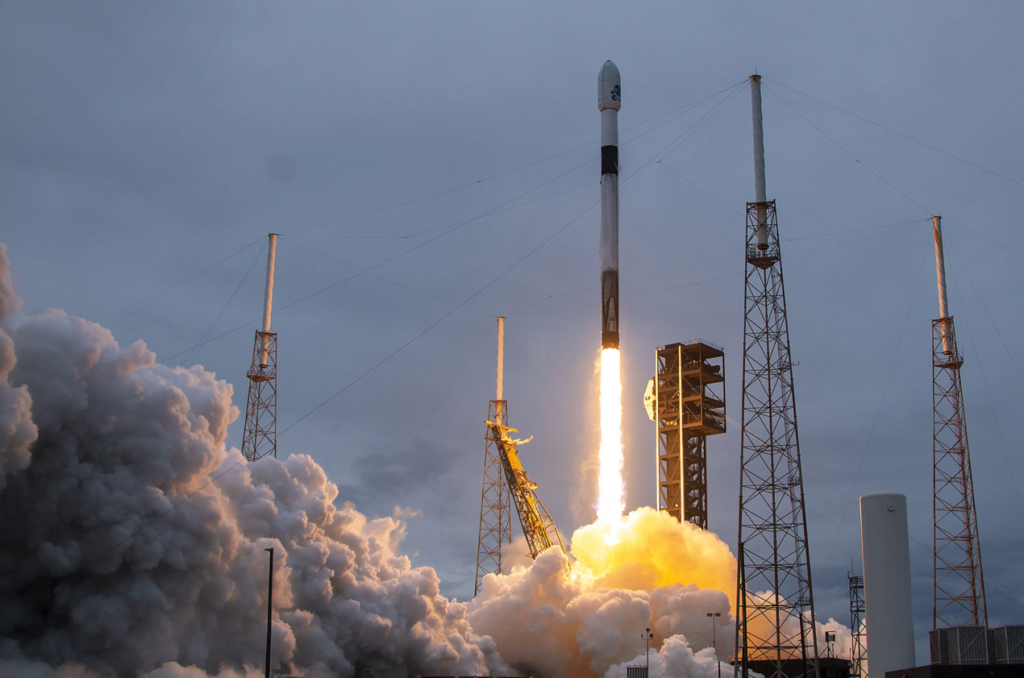
Hera lifted off on a SpaceX Falcon 9 from Cape Canaveral in Florida, USA, on 7 October 2024 at 10:52 local time (16:52 CEST) with its solar arrays deploying about one hour later. Hera is now on the way to the double asteroid Dimorphos and Didymos.
On 12 March 2025, the European Space Agency (ESA) Hera space probe conducted a flyby of Mars and its moons, Phobos and Deimos. During the flyby, Hera used Mars’s gravity to optimise its trajectory. Its closest approach to Mars occurred at a distance of approximately 5000 kilometres, but the probe passed even closer to Deimos, coming within approximately 1000 kilometres and allowing it to capture detailed images of both the Red Planet and its mysterious smaller moon from a new perspective. The Asteroid Framing Camera (AFC) system, built by Jena-Optronik and scientifically supervised by the German Aerospace Center (Deutschen Zentrum für Luft- und Raumfahrt; DLR), was used for imaging. The newly gathered data will contribute to the scientific study of Deimos, while also allowing calibration of Hera’s instruments ahead of its primary mission in the Didymos system.
Germany is the largest contributor to the mission. The German Space Agency at the German Aerospace Center (Deutsches Zentrum für Luft- und Raumfahrt; DLR) coordinates Germany’s ESA contributions with funds from the Federal Ministry for Economic Affairs and Climate Action (BMWK). DLR is involved in terms of science through its Microgravity User Support Centre (MUSC) in Cologne and the DLR Institute of Planetary Research. The spacecraft was developed and built by the company OHB in Bremen, and Hera will send its data to Earth using a newly developed German antenna. Last but not least, two cameras produced in Jena will provide images of Didymos and Dimorphos.
“Sixty-six million years ago, an asteroid struck Mexico and was very probably the cause of the extinction of the dinosaurs. If large asteroids were to hit Earth, it would pose a real threat to our planet and all of humanity. With the Hera mission, we are expanding our knowledge of asteroids and, together with NASA, JAXA, ESA and other space agencies, are making a major contribution to effective planetary defence,” says Walther Pelzer, DLR Executive Board member and Director General of the German Space Agency at DLR.
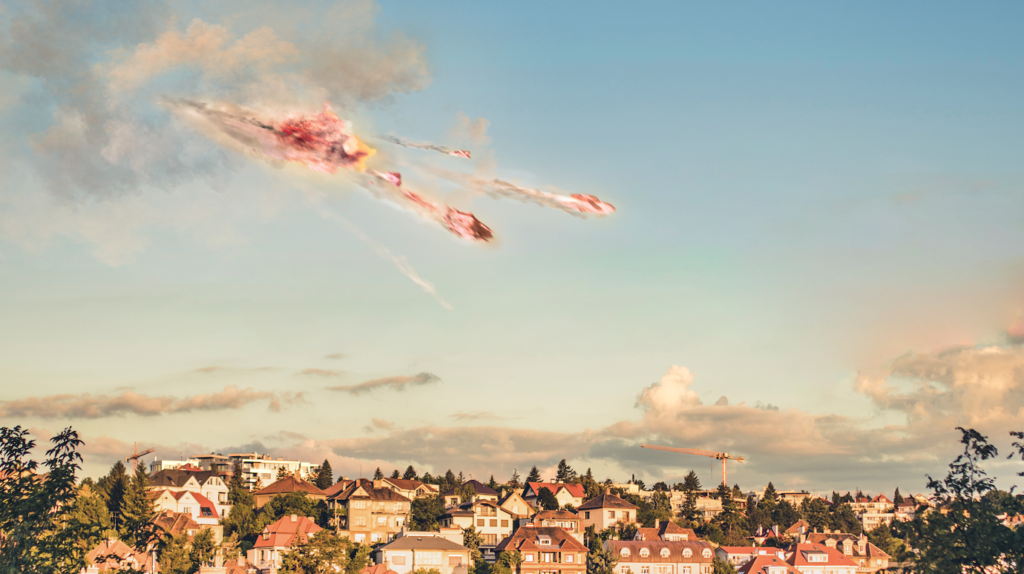
| Planetary defence against asteroids
Asteroid impacts on Earth are very rare but can have serious consequences. On 15 February 2013, around 1500 people were injured when a small asteroid measuring 20 metres across entered Earth’s atmosphere near Chelyabinsk, a Russian city with a population of over one million. Most of it vaporised, but what remained triggered an explosion at an altitude of around 30 kilometres, sending a shock wave that caused injuries in the city from countless shattered window panes. “Chelyabinsk was an event that serves as a warning, and to prevent dangerous incidents in the future, we need the data from the Hera mission,” explains Manuel Metz, Hera project manager at the German Space Agency at DLR. “The consequences of an impact by a larger celestial body would be much more severe and could even threaten entire ocean coasts or continents. This would have existential consequences for the survival of humanity,” emphasises Stephan Ulamec of MUSC, who is involved in the Hera mission’s science tea. “The remains of the almost 200-kilometre-wide Chicxulub crater in what is now Mexico are a testament to this.”
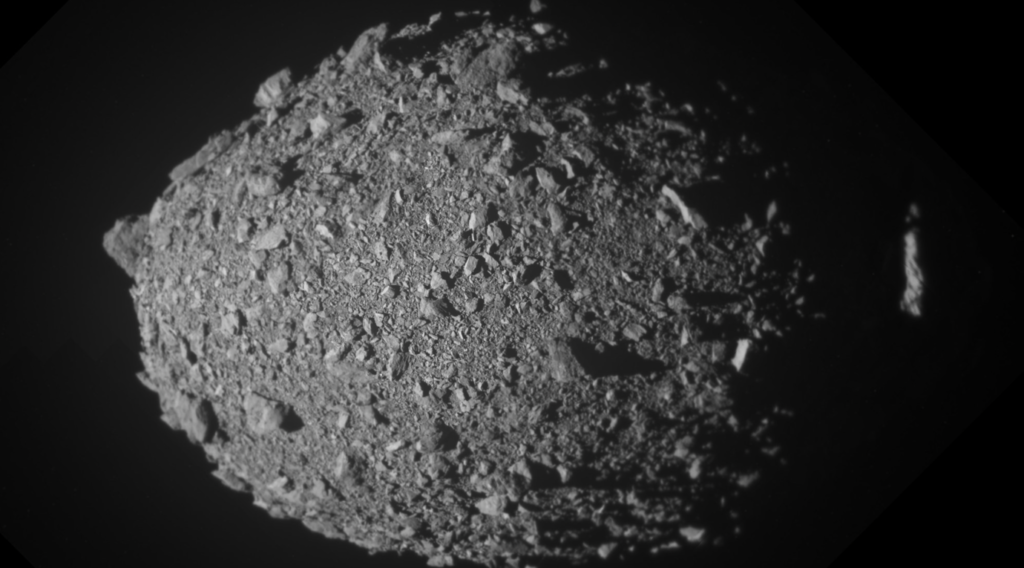
| Preparing to ward off near-Earth objects
The good news is that none of the approximately 36,000 known near-Earth objects (NEOs) with a diameter of more than 100 metres are currently on a collision course with Earth. The Apophis asteroid, discovered in 2004, will fly past Earth in 2029 and at its closest approach will be just 31,750 kilometres away, closer than geostationary satellites. Apophis is around 350 metres in diameter, which would have extreme consequences in the event of an impact. Based on what we know today, such a collision can be ruled out for the 21st century, but the fact that Apophis will pass so close to Earth shows that we must always be prepared for such events. In order to develop methods for effectively countering such dangers, NASA and ESA are conducting the ‘Asteroid Impact and Deflection Assessment’ (AIDA) joint project, consisting of NASA’s DART and ESA’s Hera missions.
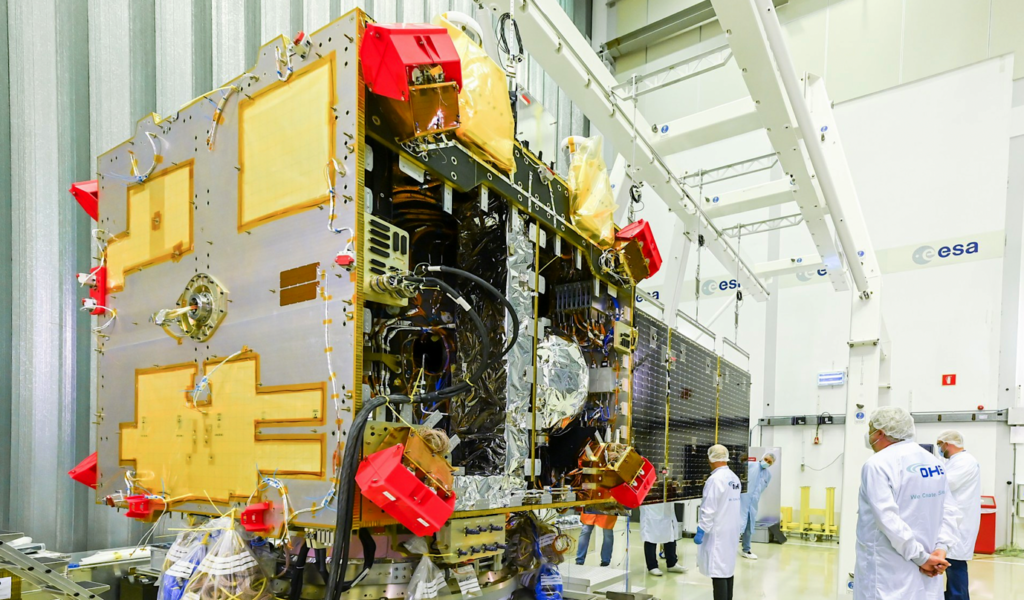
| The DART and Hera missions
NASA began the project with the DART (Double Asteroid Redirection Test) space probe. The chosen target was the Didymos and Dimorphos binary asteroid system, where the much smaller Dimorphos (around 150 metres in diameter) orbits the larger Didymos (around 800 metres in diameter). The aim was to influence the time that it takes for the asteroids to orbit each other. To do this, DART collided with Dimorphos at a controlled speed of over six kilometres per second (22,500 kilometres per hour) on 26 September 2022. Measurements with telescopes were able to determine that the orbital period had been shortened by 33 minutes from the original 11 hours 55 minutes, surpassing the 10-minute reduction predicted by prior modelling.
Hera is sent to the binary asteroid system to investigate exactly how the orbital period and shape of the asteroid has changed. The probe is equipped with 12 measuring instruments for this purpose. Among the most important ones are the two Asteroid Framing Cameras (AFC), two redundant monochromatic cameras built in Jena, which will be used to determine the position of the space probe in the asteroid system. They are essential for the navigation of the spacecraft and will also contribute to further exploration of the asteroids.
| Digital terrain model of the asteroid
The Hera science team will use the images from the AFCs to calculate a digital terrain model of the asteroid and search for changes caused by the DART impact on Dimorphos (in fact the asteroid’s name derives from the Greek for ‘two forms’, referring to its changed shape after the impact). “Was a crater created on Dimorphos? Was the entire asteroid altered? Was Didymos’ surface also affected by ejected material? We want to answer these questions using our digital terrain model,” says Principal Investigator for the cameras Jean-Baptiste Vincent from the DLR Institute of Planetary Research.
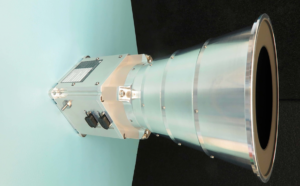
| CubeSats land on Dimorphos
Hera is also carrying two CubeSats, named Juventas and Milani, each the size of a shoebox. The nanosatellites will observe Dimorphos at close range and ultimately attempt to land on it in the final phase of the mission to measure its surface characteristics, interior structure and gravitational field. The measurements are intended to determine the exact mass of Dimorphos, which will have already been determined by the AFCs. The data obtained will then be used to calculate how other celestial bodies could be deflected, forming the basis of a planetary defence mission in the event of an asteroid on a collision course with Earth. The data collected will also mark a further milestone in asteroid research more generally.
| German technology featured in a European joint project
Germany is the largest contributor to the ESA mission, providing around 130 million euros (37 percent of the total). The Hera spacecraft was developed and built by OHB SE in Bremen. A newly developed antenna made of carbon-fibre-reinforced plastic was produced by Munich-based HPS, while the two AFCs are from Jena-Optronik. The TUD Dresden University of Technology is heavily involved in the development of the radar experiment on the Juventas CubeSat. German researchers are also working on the Hera Science team to scientifically evaluate the data obtained from the mission. The German Space Agency at DLR is coordinating all of these German contributions to the mission with funding from the Federal Ministry for Economic Affairs and Climate Action (BMWK).

